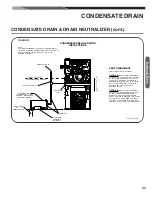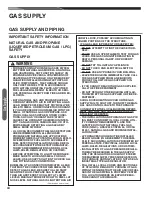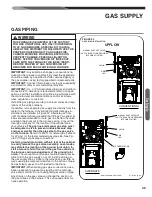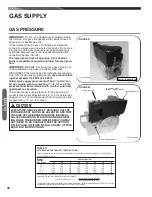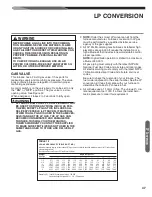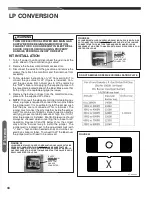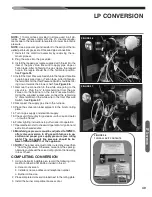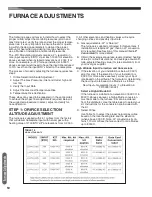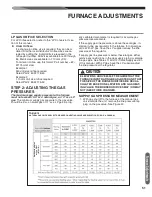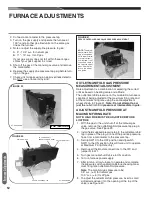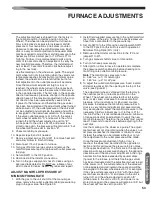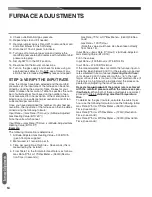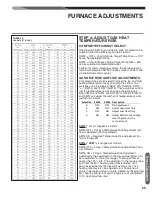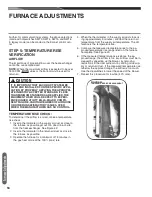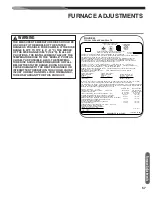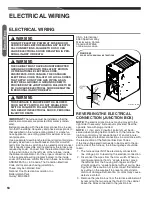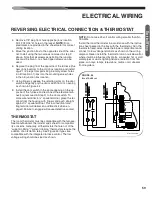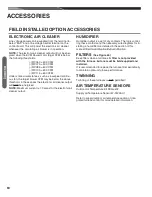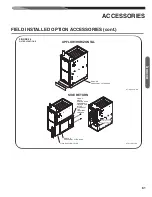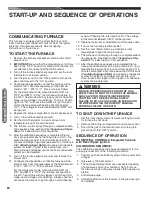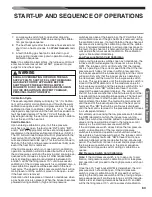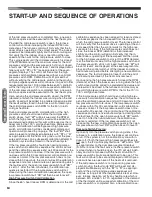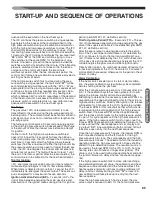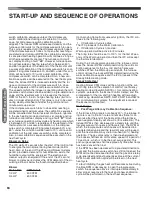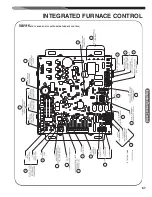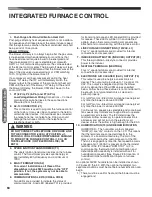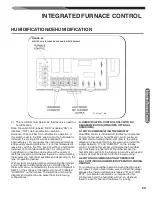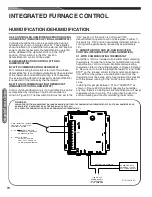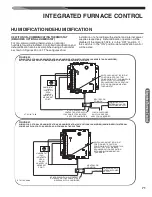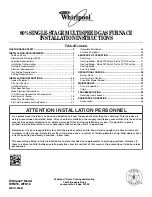
56
Further, for communicating systems, the above selections
(made with dipswitches SW13, SW14, SW15, and SW16
in legacy mode) can be made via the Econet control cen-
ter.
STEP 5: TEMPERATURE RISE
VERIFICATION
AIRFLOW
The importance of proper airflow over the heat exchanger
cannot be over-emphasized.
NOTE
: Where the maximum airflow is expected to be over
1800 CFM,
BOTH
sides or the bottom must be used for
return air.
TEMPERATURE RISE CHECK:
To determine if the airflow is correct, make a temperature
rise check.
1. Insert a thermometer in the supply air duct as close to
the furnace as possible yet out of a direct line-of-site
from the heat exchanger. See Figure 42.
2. Insert a thermometer in the return air duct as close to
the furnace as possible.
3. Operate the furnace for a minimum of 15 minutes in
the gas heat mode at the 100% (max) rate.
4. When the thermometer in the supply air duct stops ris-
ing (approximately 5 minutes), subtract the return air
temperature from the supply air temperature. The dif-
ference is the temperature rise.
5. Compare the measured temperature rise to the ap-
proved temperature rise range listed on the furnace
nameplate. See Figure 43.
6. If the measured temperature rise is above the ap-
proved range, the airflow is too low. Airflow must be in-
creased by speeding up the blower, by removing
restrictions in the duct system or by adding more sup-
ply or return-air duct. If the measured temperature rise
is below the approved range, the airflow is too much.
Use the dipswitches to lower the speed of the blower.
7, Repeat this procedure for low-fire (40% rate).
FURNACE ADJUSTMENTS
Fu
rn
ac
e
Ad
ju
stm
en
ts
FIGURE 42
TEMPERATURE RISE MEASUREMENT
!
CAUTION
IT IS IMPORTANT THAT EACH DUCT SYSTEM BE
SIZED AND INSTALLED FOR THE SPECIFIC APPLI-
CATION BY PROPERLY APPLYING THE APPROPRI-
ATE INDUSTRY-ACCEPTED STANDARD. IF LESS
THAN MINIMUM STANDARDS ARE APPLIED, THE
EQUIPMENT USER COULD EXPECT TO EXPERI-
ENCE HIGHER UTILITY BILLS, MAJOR COMPO-
NENT FAILURE, VARYING DEGREES OF AIR NOISE
OR OTHER UNSATISFACTORY ISSUES, OVER
WHICH THE MANUFACTURER HAS NO CONTROL.


